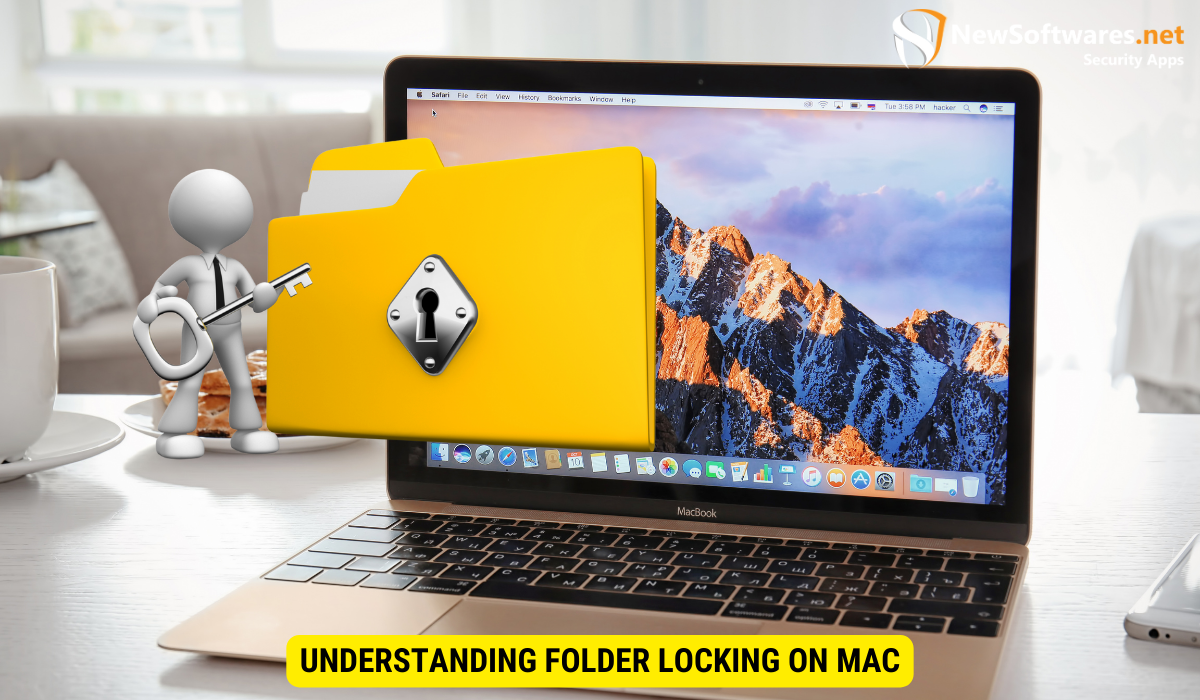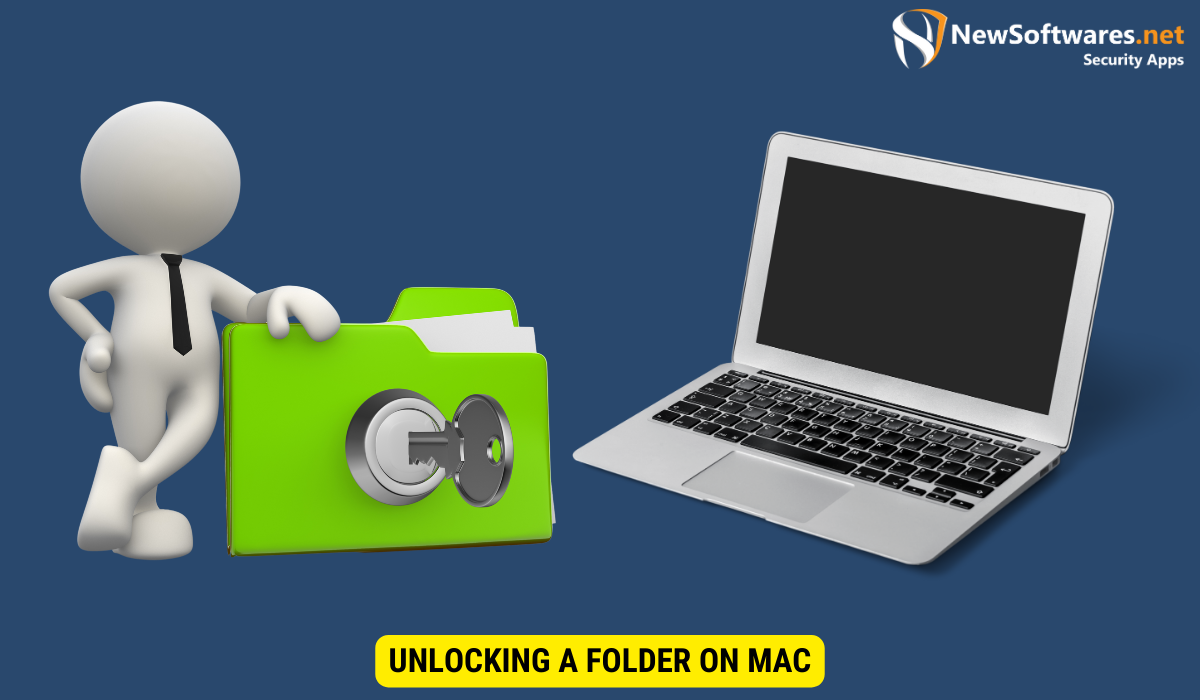To lock a folder on your Mac, you can use built-in tools like Disk Utility or Terminal commands. These methods provide added security by encrypting the folder contents and ensuring only authorized users can access them.
Do you want to add an extra layer of security to your private files and folders on your Mac? One effective way to achieve this is by locking them. Locking a folder on your Mac ensures that only authorized users can access its contents. I will tae you through the process of locking and unlocking folders on your Mac, step by step.
Understanding Folder Locking on Mac

Before we dive into the technicalities, let’s first understand the importance of folder locking on your Mac. The security of your personal and sensitive data is crucial in today’s digital age. Folder locking provides an additional barrier of protection against unauthorized access, ensuring that your files remain safe and confidential.
Now, let’s familiarize ourselves with some basic concepts of folder locking on Mac. When you lock a folder, it becomes inaccessible to anyone who doesn’t have the appropriate permissions. This includes other users on your Mac and even potential hackers who may try to gain unauthorized access to your files.
One key feature of folder locking on Mac is the ability to set different levels of access permissions for individual folders. This means you can customize who can view, edit, or delete specific files within a locked folder. By fine-tuning these permissions, you can maintain tight control over your data and ensure that only authorized users can make changes.
Additionally, Mac offers advanced encryption options for locked folders, adding an extra layer of security. Encryption scrambles the contents of your files, making them unreadable without the correct decryption key. This feature is especially useful for highly sensitive information that requires the highest level of protection.
Preparing Your Mac for Folder Locking
Before you start locking folders on your Mac, it’s important to make sure your system is prepared. The following steps will help ensure a smooth and hassle-free folder locking process:
Checking Your Mac’s Version
Make sure your Mac’s operating system is updated to the latest version. This will ensure compatibility with the folder locking methods we will be discussing later in this article. To check for updates, go to the Apple menu, click on “About This Mac,” and then select “Software Update.”
Keeping your system up to date not only ensures compatibility with the latest folder locking tools but also helps protect your Mac from security vulnerabilities and performance issues. Regular updates provide bug fixes, new features, and enhanced stability, making your overall computing experience more secure and efficient.
Setting Up Your Mac’s Preferences
Go to the System Preferences on your Mac and navigate to the Security & Privacy settings. Here, you can customize your Mac’s security options, including password requirements and file encryption settings. Make sure these preferences are set according to your security needs.
Within the Security & Privacy settings, you can also manage other crucial aspects of your Mac’s security, such as firewall settings, privacy permissions for apps, and secure boot options. Taking the time to review and adjust these settings can significantly enhance the overall protection of your system and data, safeguarding against potential threats and unauthorized access.
Step-by-Step Guide to Lock a Folder on Mac
Now that your Mac is prepared for folder locking, let’s dive into the step-by-step process of locking a folder:
Creating a New Folder to Lock
The first step is to create a new folder that you want to lock. You can do this by right-clicking on your desktop or in the desired location within Finder, selecting “New Folder,” and giving it a name.
But wait, before you proceed, let’s talk about the importance of choosing the right name for your folder. It’s not just about being creative or descriptive; it’s also about security. Avoid using obvious names that could attract unwanted attention. Instead, opt for something inconspicuous, like “Untitled” or “Miscellaneous.” This way, potential intruders will have a harder time guessing the contents of your locked folder.
Using Disk Utility to Lock a Folder
One method to lock a folder on your Mac is by utilizing the built-in Disk Utility application. Follow these steps:
- Open Disk Utility from the “Applications” folder or by searching for it using Spotlight.
- In Disk Utility, go to the “File” menu and select “New Image,” and then “Blank Image.”
- Choose the size and location for the new disk image file, and select “Read/Write” under the “Format” option.
- Click the “Save” button, and then enter a secure password when prompted.
- Once the disk image file is created, locate it and double-click to mount it.
- Drag and drop the folder you want to lock into the mounted disk image.
- Eject the mounted disk image, and your folder is now securely locked inside the disk image.
Now, let’s take a moment to appreciate the power of Disk Utility. Not only does it allow you to lock your folder, but it also provides an additional layer of protection by encrypting the disk image file. This means that even if someone manages to access the file, they won’t be able to open it without the password you set. It’s like having a secret vault within your Mac, keeping your sensitive information away from prying eyes.
Locking a Folder with Terminal
If you prefer a more advanced method, you can use Terminal to lock a folder on your Mac. Follow these steps:
- Open Terminal from the “Utilities” folder or by searching for it using Spotlight.
- Navigate to the location of the folder you want to lock using the “cd” command.
- Type the following command:
chflags -R uchg foldername, replacing “foldername” with the name of the folder you want to lock. - Press “Enter” to execute the command.
- Your folder is now locked and inaccessible to unauthorized users.
Terminal, the command-line interface of your Mac, offers a world of possibilities for advanced users. By using the “chflags” command, you can set special flags on files and folders, like the “uchg” flag we used to lock the folder. This flag stands for “user immutable” and prevents any changes to the folder’s contents, ensuring its security. It’s like putting an unbreakable seal on your folder, giving you peace of mind knowing that your confidential files are safe.
Unlocking a Folder on Mac

If you need to unlock a folder on your Mac, follow these methods:
Unlocking a Folder with Disk Utility
To unlock a folder previously locked with Disk Utility, follow these steps:
- Open Disk Utility and locate the disk image containing the locked folder.
- Double-click on the disk image to mount it.
- Enter the password you set when locking the folder.
- The disk image will be mounted, and you can access the locked folder.
Terminal Commands for Unlocking a Folder
To unlock a folder locked with Terminal, follow these steps:
- Open Terminal and navigate to the location of the locked folder.
- Type the following command:
chflags -R nouchg foldername, replacing “foldername” with the name of the locked folder. - Press “Enter” to execute the command.
- Your folder is now unlocked and accessible again.
Troubleshooting Common Issues
Despite following the steps carefully, you may encounter some common issues when locking or unlocking folders on your Mac. Here are a few solutions:
Dealing with Forgotten Passwords
If you forget the password for a locked folder, it can be challenging to regain access. One solution is to use a password recovery tool specifically designed for Mac systems. These tools can help you recover or reset lost passwords, allowing you to regain access to your locked folders.
Resolving Locking and Unlocking Errors
If you encounter errors while attempting to lock or unlock folders, it’s essential to ensure that you have the necessary permissions and are following the correct steps. Double-check your Mac’s security settings and consult the official documentation or online forums for troubleshooting tips.
Key Takeaways
- Folder locking on your Mac adds an essential layer of security to your private files, protecting them from unauthorized access.
- Utilize built-in tools like Disk Utility or Terminal commands to lock folders and encrypt their contents for added protection.
- Choose inconspicuous folder names to minimize the risk of attracting unwanted attention to your locked folders.
- Regularly update your Mac’s operating system and security preferences to ensure compatibility and enhance overall protection.
- In case of forgotten passwords or errors, use password recovery tools or consult official
FAQs
1. Can I lock individual files within a folder on Mac?
Yes, you can lock individual files within a folder on Mac by placing them inside a locked folder or using third-party software specifically designed for file encryption.
2. Can I share a locked folder with others?
It is not recommended to share a locked folder with others, as they will not be able to access its contents without the appropriate password or permissions. If you need to share files securely, consider using encrypted file-sharing methods or password-protected archives.
3. Can I use third-party software for folder locking on Mac?
Yes, there are several third-party applications available for folder locking on Mac. These applications provide additional features and customization options for securing your folders.
4. Does locking a folder affect its contents?
No, locking a folder on Mac does not affect its contents. The locked folder remains intact, but it becomes inaccessible to unauthorized users.
5. Can I use a different method to lock folders on older versions of macOS?
While the methods provided in this article should work on most macOS versions, it’s always recommended to check specific instructions or consult official documentation for compatibility with older operating systems.
Conclusion
In conclusion, locking a folder on your Mac adds an extra layer of security to your private files and ensures that only authorized users can access them. By following the step-by-step guide provided in this article, you can easily lock and unlock folders on your Mac using built-in applications or Terminal commands. Protecting your sensitive data has never been easier.
